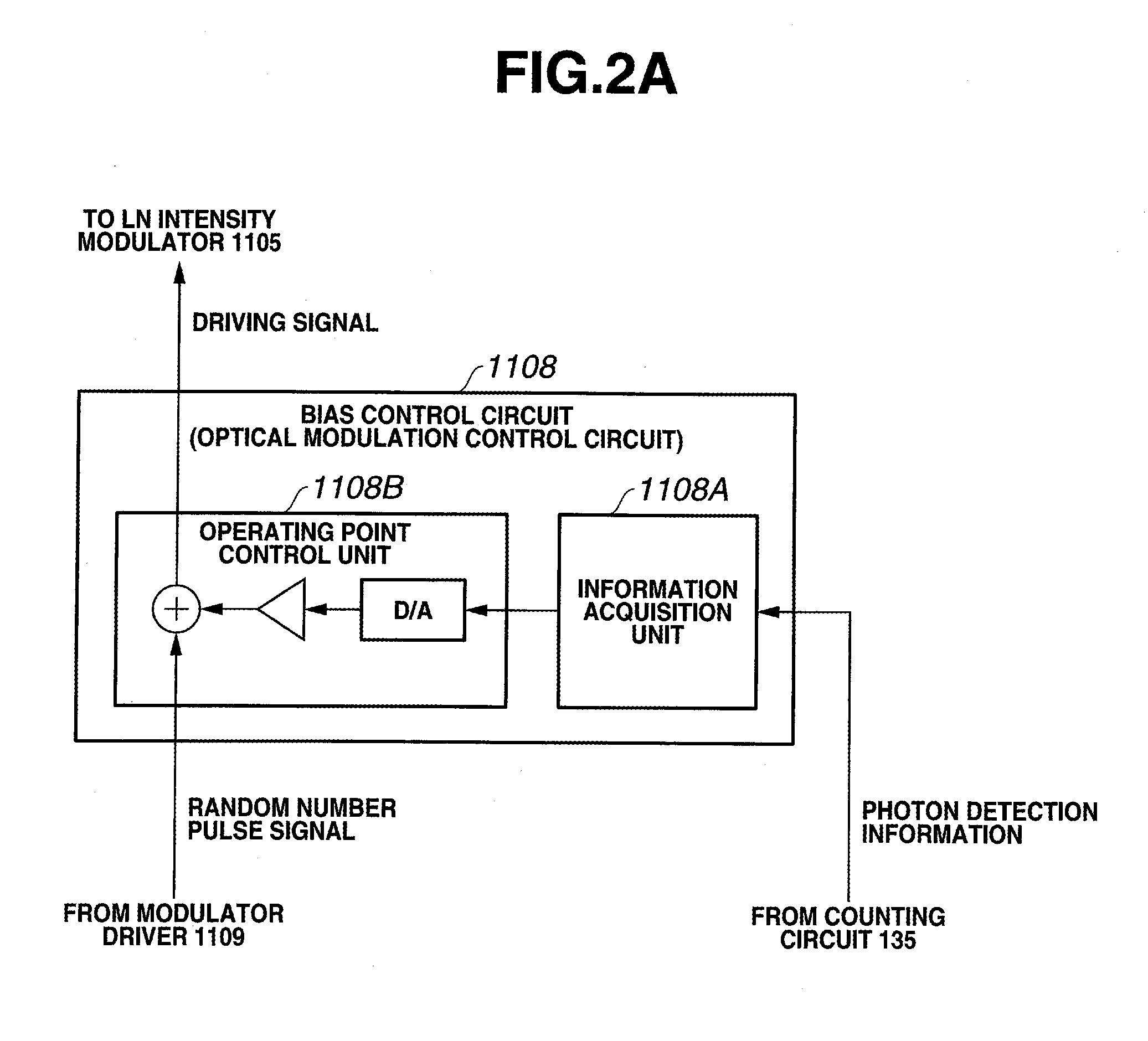Quantum key distribution system, optical transmitter, optical modulation control circuit, and optical modulation control method
a quantum key distribution system and quantum key control technology, applied in the field of optical modulation technique, can solve the problems of affecting the operation of optical modulation, the quantum state of the quantum key distribution system cannot be completely restored before observation, and the code-breaking using an enormous amount of calculations and new decryption algorithms is an ever present danger, so as to achieve stable optical modulation operation
- Summary
- Abstract
- Description
- Claims
- Application Information
AI Technical Summary
Benefits of technology
Problems solved by technology
Method used
Image
Examples
first exemplary embodiment
Effects of First Exemplary Embodiment
[0102]A conventional auto bias control circuit cannot control the bias of the light intensity modulator used in the quantum cryptosystem. The reason is as follows. In the conventional method, a monitor PD receives light output from the modulator, and bias control is executed based on the information of the optical signal after modulation. However, the quantum cryptosystem uses a low-intensity optical signal of single photon level, and it is therefore impossible to obtain modulated optical signal information using a monitor PD.
[0103]In this exemplary embodiment, the quantum cryptographic transmitter 11 causes the phase modulators 1103 and 1104 and the LN intensity modulator 1105 to perform optical phase modulation and light intensity modulation of an optical signal based on desired data, thereby generating a desired optical signal to be transmitted to the quantum cryptographic receiver 13. The bias control circuit 1108 controls the operating point...
second exemplary embodiment
Effects of Second Exemplary Embodiment
[0132]A conventional two-way quantum key distribution system cannot obtain information of output light using a simple monitor PD. Especially, when probe light as described in reference 8 is used, signal light of single photon level is buried in noise light such as Rayleigh scattered light or Raman scattered light regardless of whether the probe light and the signal light have the same or different wavelengths. A means for reducing signal light to the single photon level after monitoring a modulated signal at a sufficient light intensity in the quantum cryptographic transmitter is not applicable due to the following reason. The reason will be explained below.
[0133]In the two-way quantum key distribution system, the photon detector observes backscattered light of an optical pulse in the forward path as noise. Out of the backscattered light, Rayleigh scattered light without any wavelength change cannot be separated from signal light by a wavelength...
PUM
 Login to View More
Login to View More Abstract
Description
Claims
Application Information
 Login to View More
Login to View More - R&D
- Intellectual Property
- Life Sciences
- Materials
- Tech Scout
- Unparalleled Data Quality
- Higher Quality Content
- 60% Fewer Hallucinations
Browse by: Latest US Patents, China's latest patents, Technical Efficacy Thesaurus, Application Domain, Technology Topic, Popular Technical Reports.
© 2025 PatSnap. All rights reserved.Legal|Privacy policy|Modern Slavery Act Transparency Statement|Sitemap|About US| Contact US: help@patsnap.com



